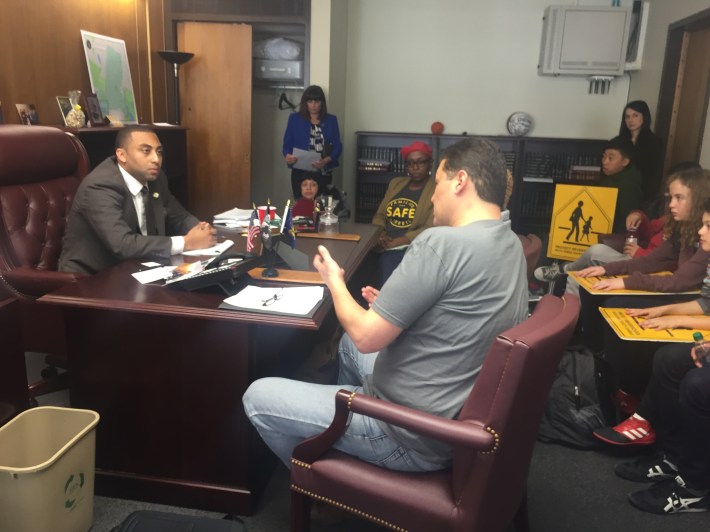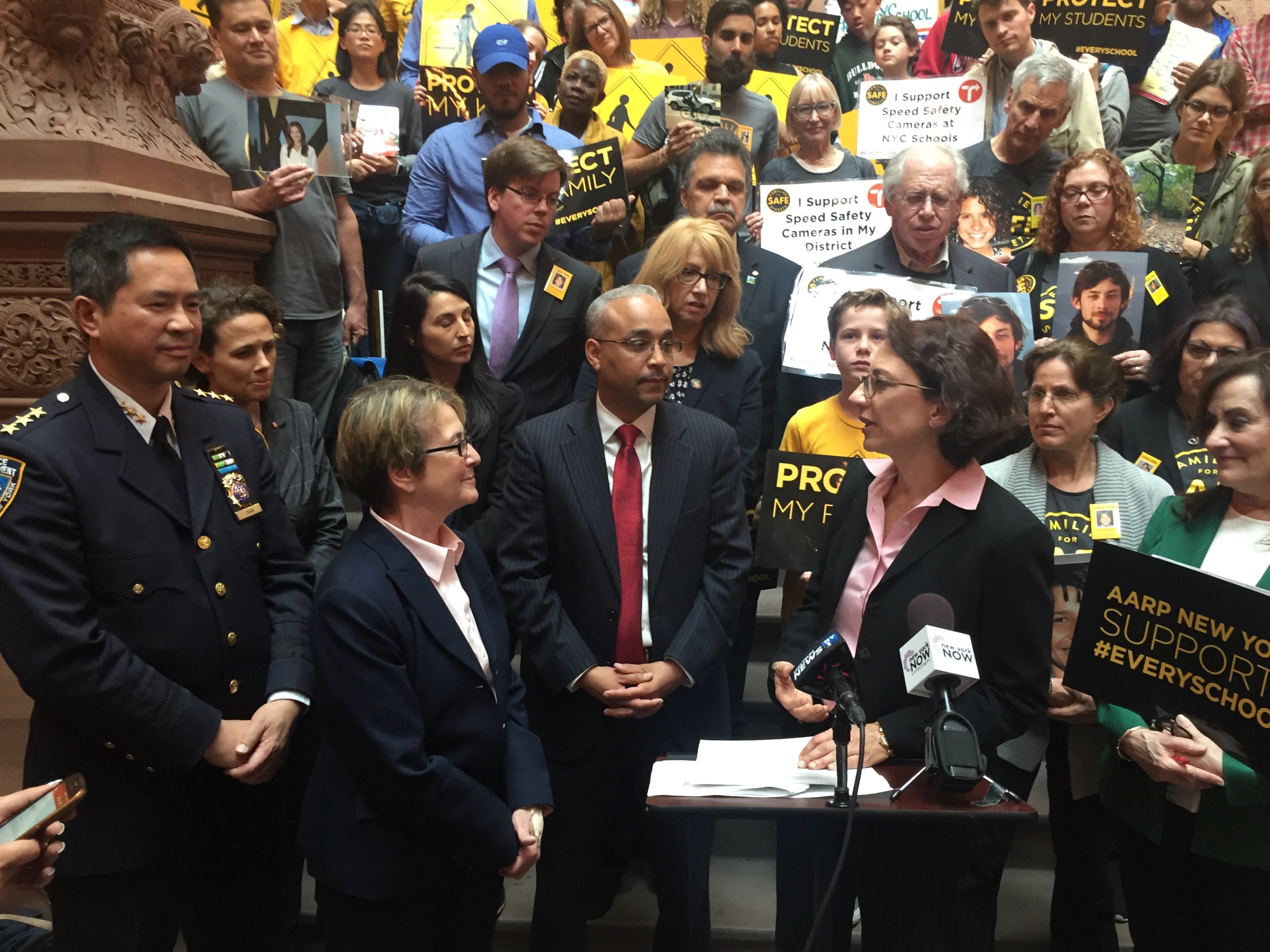Members of Families for Safe Streets and city officials trekked up to Albany yesterday to make the case for expanding New York City's automated speed enforcement program.
Speed cameras have reduced speeding by 63 percent and traffic injuries by 13 percent in locations where they have been installed, according to DOT Commissioner Polly Trottenberg, but state law limits the program to 140 school zones, which are narrowly defined as streets abutting the school's entrance within a quarter-mile of the school. That leaves many streets around NYC's more than 2,000 schools ineligible or just unprotected by automated speed enforcement.
A bill sponsored by Queens State Senator Jose Peralta and Manhattan Assembly Member Deborah Glick (S6046/A7798), written in consultation with the de Blasio administration, would increase the number of cameras to 750 and allow them to be placed on any street within a half-mile of the school. Cameras would operate from 6 a.m. to 10 p.m. every day, not just on school days during school hours.
"This is about saving children's lives -- nothing else," Peralta said. "School zones are active, chaotic. We don't need to add to the mix reckless drivers."
Before the advent of NYC's speed camera program a few years ago, there was almost no check on drivers' ability to speed on surface streets in the city with impunity. The scale of NYPD speeding summonses has always been far smaller than the scope of speeding infractions on city streets. With automated enforcement, the city was finally able to deploy a meaningful deterrent against behavior that kills and maims too many New Yorkers.
One sign that the cameras work is that at individual locations, speeding infractions decline over time as motorist behavior changes.
"This is not a program that we've designed to nail drivers or raise revenues," said Trottenberg. "We've seen that typically over 80 percent of the people that get that first speeding summons, they don't speed again in that area. It's a learning tool."

Yesterday, about 100 city residents who came to support the bill split up into smaller groups and met with legislators or legislative staffers from more than 50 districts. They shared personal stories of how speeding drivers personally affected them or their loved ones.
Hilda Chazanovitz survived a crash last year at 96th Street and West End Avenue. "By all accounts I'm lucky be here," she told a staffer for Assembly Member Dan Quart.
"P.S. 75 is right on that corner," she said. "It's pretty staggering to think about kids crossing there."
In 2016, legislative leaders and Governor Cuomo did not advance legislation to expand the program. This year, the bill has the support of Senator Jeff Klein, the leader of the Independent Democratic Conference, which shares power with Republicans in the State Senate. But Martin Golden, the senior Senate Republican representing NYC, is the gatekeeper to getting a vote on the floor.
Last week, Golden called elements of the bill "non-starters" and predicted it would be a tough sell for Senate Republicans, but proponents of the bill view that as an opening position.
"It sounds to me that Senator Golden wants to negotiate," Peralta told reporters yesterday. "The bottom line here is that we need to save lives."
Trottenberg believes legislators will be won over by the evidence that cameras have successfully reduced speeding and traffic crashes on NYC streets.
"I've really tried to say we have tried to be thoughtful, to be data-driven, to put the cameras where we see the highest crash rates, to not be engaging in 'gotcha' -- that's not our goal," she told Streetsblog. "We've got a real track record this year."






